How Much Does it Cost to Make an App in 2023?
You’ve probably noticed when researching, “How much does it cost to make an app?” that figures can vary drastically, if you can find a number at all.
Pricing out an app is an involved process that often has to consider a wide variety of factors – here, we walk through everything that’s involved in determining the cost of an app along with some helpful visuals and examples.
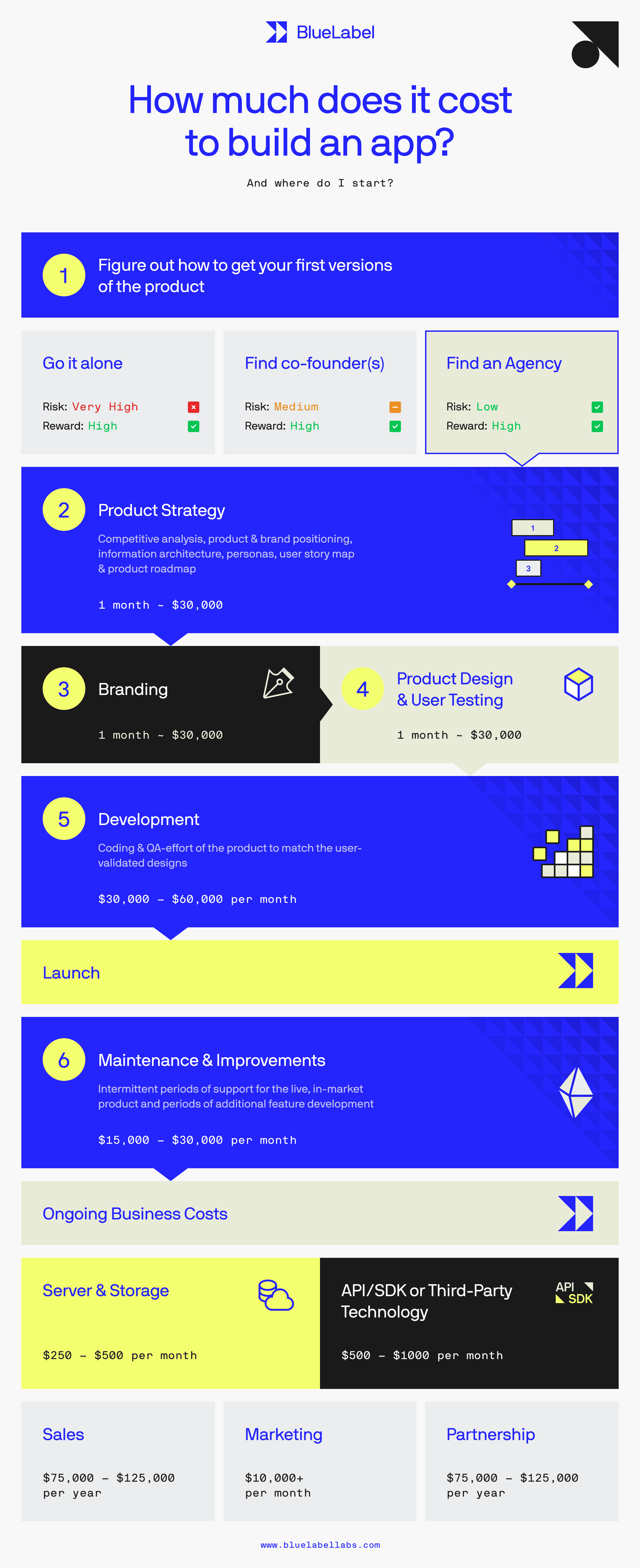
How much does it cost to make an app: how price is determined
So, you want to build an app?
Better stated: so, you want to build an app-based business but find it hard to pinpoint a price tag?
Let’s start with the harsh realities of the costs associated with building an app-based business, and then cover the step-by-step, component costs.
Only 1 in 10 app-based businesses survives longer than 5 years. And those that do survive end up raising (and spending) tens of millions, if not hundreds of millions of dollars over their lifetime.
Given that kind of failure rate and the amount of required capital, you might ask yourself why anyone would even try?
The answer is all about risk and reward.
Yes, the creation of an app-based business is risky, but if done right, the reward of a multi-million (or multi-billion dollar) exit (i.e., sale or IPO) could make it all worthwhile. Every week, a new digital product reaches the coveted “unicorn status” of a one billion dollar valuation.
In 2021 alone, 340 new Unicorns were minted compared to 296 total in the preceding 5 years!

One can hope! | Source:Inc.com
But we’re getting ahead of ourselves here.
What are the costs associated with the first steps in achieving unicorn status?
We’ll assume here that you already have a concept or idea that you believe in. The next step is to figure out how to get your first versions of the product to market.
You have three main options:
- Go it alone
- Find co-founder(s)
- Find an agency
Going it alone is surely an option if you have all the product strategy, design, development/coding, analytics, sales, marketing, partnership, and fundraising skills needed. If this is the case, you’ve already got “Unicorn Status” in my book so kudos to you!
For the rest of us non-unicorns, we’re left with the second two options.
App development costs associated with finding co-founders are relatively straightforward. Sweat equity is your currency. You give up a portion of your company’s ownership to those co-founders (and/or early employees) that are joining in those heady, early days.
How much ownership, you might ask?
Well, covering that topic will require another article altogether as that gets complicated. That said, giving up equity to folks with relevant skill sets is a way of getting a venture off the ground with little-to-no cash outlays.
This path does require a potential life-long commitment to a person or set of people. And if 50% of marriages end in divorce, I don’t want to even know what the stat is for co-founders. Scary, risky stuff. But again, a path many have taken.
That takes us to the third option and where we’ll be spending most of our time in this article:
Finding an agency.
Now our readers might be thinking, why should we trust an agency that does this for a living?
Point taken, we surely have a bias here.
We do believe that finding an agency has its benefits vis-a-vis “Going it alone” or “Finding a co-founder”. If you’re deadset on not spending any cash money to get the first version of your product to market, you can stop reading here, you’re not going to like what comes next.
Jack-of-all trades Unicorns and people willing to give up 50% or more of their company from the jump are welcome to exit stage right as well.
For those intrepid, savvy entrepreneurs who aren’t scared to spend a bit of money, read on!
Here is an outline of the app development costs associated with building the first version of a product (a minimum viable product, MVP) with an agency:
- Product Strategy Costs
- Branding Costs
- UX & UI Design + User Test Costs
- Development Costs
- Analytics Costs
- Maintenance Costs
- Server & Storage Costs
- API/SDK or Third-Party Technology Costs
- Sales Costs
- Marketing Costs
- Partnership Costs
- People/Salary Costs
- Benefits Costs
- Office Costs
- Utility Costs
- Printer Costs
- ….
- Margs with the Team at Your Local Cantina Costs
- Postage Stamp Costs
- You get the idea…
Phew… I’m as exhausted as you right now. That’s a lot to cover in this tinny-weenie blog post.
Now go top-up that coffee, and then let’s dig in.
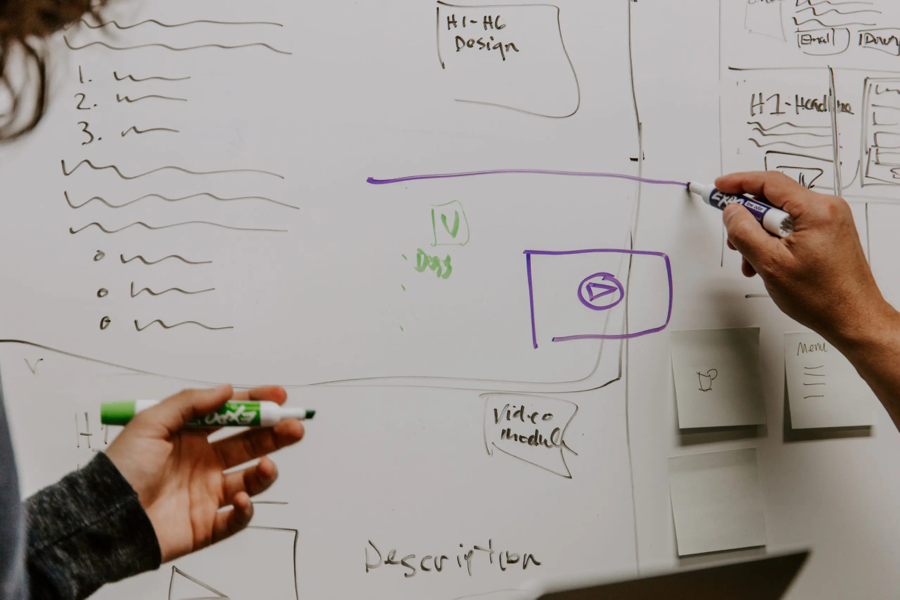
To accomplish whiteboarding virtually, we like Miro. | Source: Kaleidico on Unsplash
Product Strategy Costs
This is the hardest part to get right. It’s here where you’ll work with an agency to determine what exactly you should consider creating and who you’re creating it for.
Talking to real (potential) users/early adopters and reviewing the market landscape and its competitors are paramount. If you’ve already done your homework, gathered feedback from a critical mass of (potential) users, and know that there is greenfield space here (i.e., there are no major competitors), then you can skip this.
But again, as the hardest part of the process to get right, skimping here is a very amateur-hour move.
Plan for at least one month and ~$30,000.
Branding Costs
Ain’t nobody got time for bad design. Here in the 2020’s users expect polish and have no patience for ugly. Aesthetics and their importance are at all-time highs.
Plan for at least one month and another ~$30,000. This work can often overlap with the previous from a timing perspective.
UX & UI Design + User Testing Costs
Now that you’ve got a user-validated sense of what you need to build and a brand system in place, it’s time to design the product and iteratively test it with users.
Greyscale flows or wireframes are created by UX (User Experience) Designers; they are then shared with (potential) users for feedback and course correction.
More UX design work is done and these prototypes are re-tested before the beautiful coat of paint as dictated by the aforementioned Branding effort is done. The more user testing.
Rinse & repeat my friends.
Plan for at least two months and an additional ~$60,000.
At this point, we’re at $12,000 in app development costs and we haven’t even written a line of code.
And for good reason: why develop anything until you’ve gotten user validation that it’s the right thing to build? Don’t even get me started with those agencies that forgo user testing or even worse, make it optional. It’s only optional if you’re a big fan of failure.
Development Costs
Development is both art and science. It’s not all math, but it is entirely problem-solving.
Problem-solving with a keyboard. This is where the coders start coding.
What they code has been determined by the steps above, but how they code is what’s important.
This is also where variance in complexity comes into play. This is also where the definition of the first version/MVP becomes vitally important. You can’t under-build because it’s not viable (with users), but you can’t overbuild because it’s no longer minimal (and you’ve overspent).
Development costs can range anywhere from $120,000 to $360,000 over a two-to-six-month timeframe.
If it takes more than 6 months of development to get your MVP to market, in all likelihood you’ve overshot the definition of “minimum” for your MVP.
Analytics Costs
This is a good time for a quote and what better than the famous one from economist Peter Drucker, “you can’t manage what you can’t measure.”
We happen to agree with this sage man.
Analytics is the process of ensuring you can gather data about how users are using your product once it’s in their hands in the wild.
Without analytics, you’re flying blind.
Yes, qualitative conversations with individual users are interesting (and we do those too), but nothing beats cold hard facts and figures.
The analytics work we do is often powered by third-party tools like Amplitude and Mixpanel.
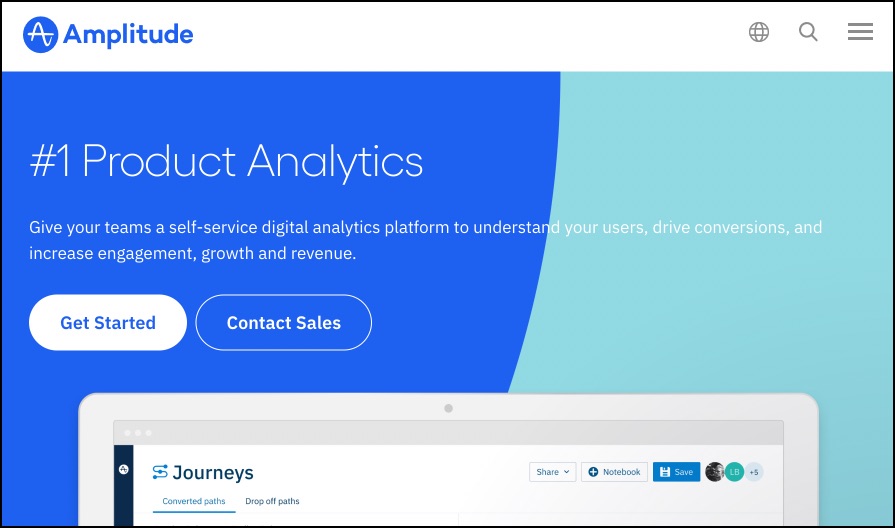
By integrating the toolset (or Software Development Kits, SDKs) from these providers into a product, then determining the right activities (or events) are the rights ones to track, voila you have data flow.
But no one likes data for data’s sake. It needs to be interpreted and made actionable.
Agencies can act as that long-term partner that helps you mine and interpret the data flowing from your app to determine what is next on the product design & development roadmap.
Maintenance Costs
Congratulations! You’ve launched your MVP to the market, now it’s time to let the gravy train run, right?
Well, not exactly.
The biggest factor that determines whether you’ll be the 1 in 10 digital company that survives or the 9 in 10 that goes up in flames, is whether you continue to learn from your users and evolve the product to fit their needs and the needs of the next batch of users–that would use your product if only it did XYZ.
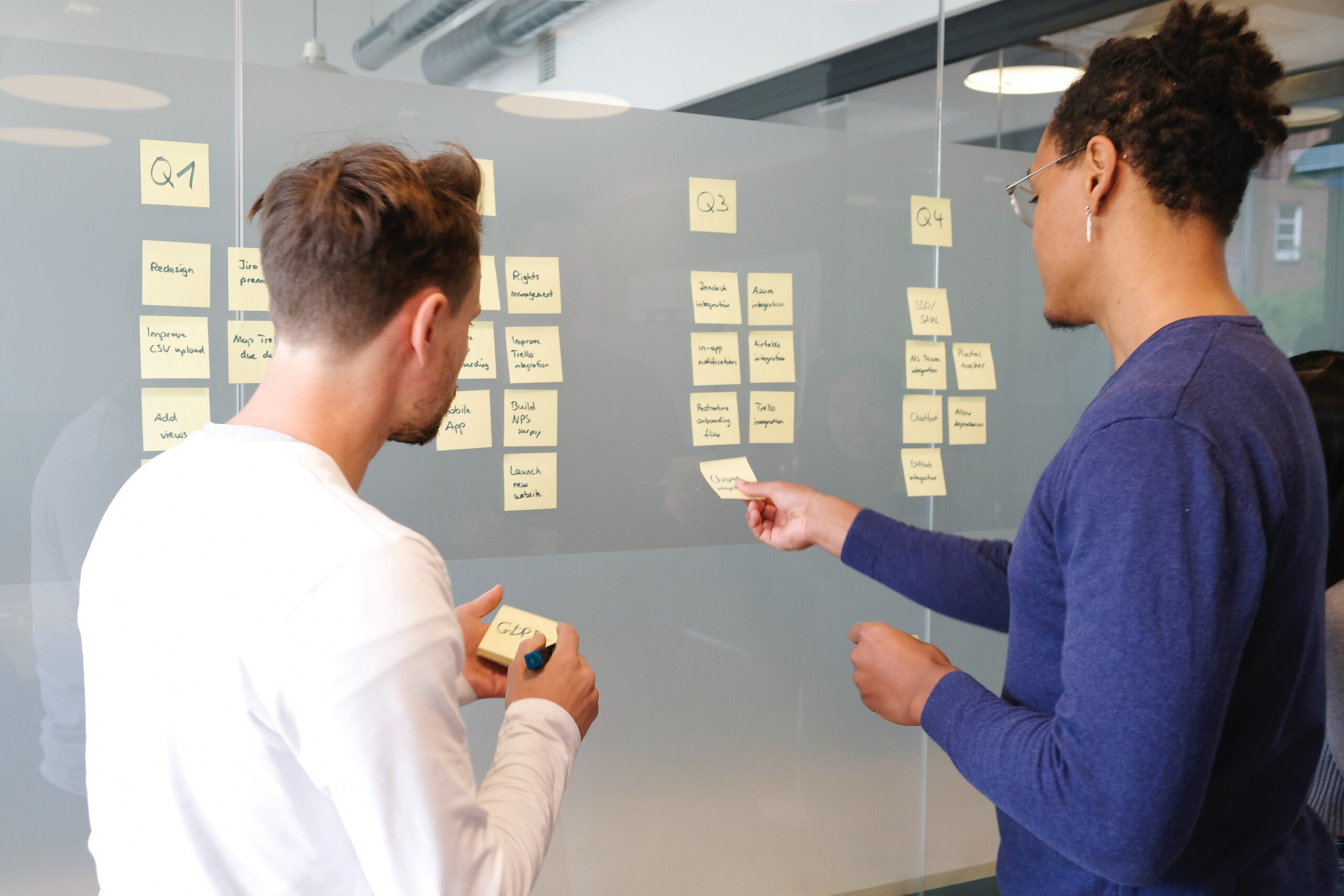
You’ll need to exercise patience as chances are, there will be all kinds of things you’ll want to do. | Source: airfocus on Unsplash
In that way, maintenance is a bit of a misnomer. Yes, there will be periods of time where you’ll want to have a stable (non-evolving) product in the market to gather data, feedback and analytics, but those will likely be periods of weeks or perhaps a couple of months, but likely not much longer. Because once you’ve gathered a critical mass of feedback, it’s time to go back to the product and update/edit/add whatever is required.
Maintenance can range from $4,000 to $30,000 per month in the app development costs equation, depending on your need for things (at the higher end of that range) like 24-hour technical support, help with analytics analysis, and assistance in product road mapping.
When not in a maintenance mode, you’re back to the $60-100K per month required to evolve the product with new or different features and functionality.
Server & Storage Costs
The agency you choose should never say they will “host” the product for you with their own server farms. It’s a telltale sign they are a joke.
Servers and storage are the cloud infrastructure where your users’ data and information are stored. This should be handled by the big-guns like Amazon AWS, Microsoft Azure, and Google Firebase.
These costs start at $250 to $500 per month and go up to thousands or tens of thousands of dollars per month depending on how many users you have.
This cost does not scale linearly with user growth, this cost goes up only slightly with each jump in user growth. In other words, you won’t be paying thousands or tens of thousands of dollars on servers and storage needs until your product has hundreds of thousands or millions of users.
API/SDK or Third-Party Technology Costs
Whether you’re working with an agency or your own co-founders, the use of third-party technology in the form of APIs and SDKs often have costs associated with them.
You can think of things like Stripe (for payment processing), Chekr (for background checks), or Salesforce (for CRM integration) as examples of third-party technology that you might want to be integrated into your product.
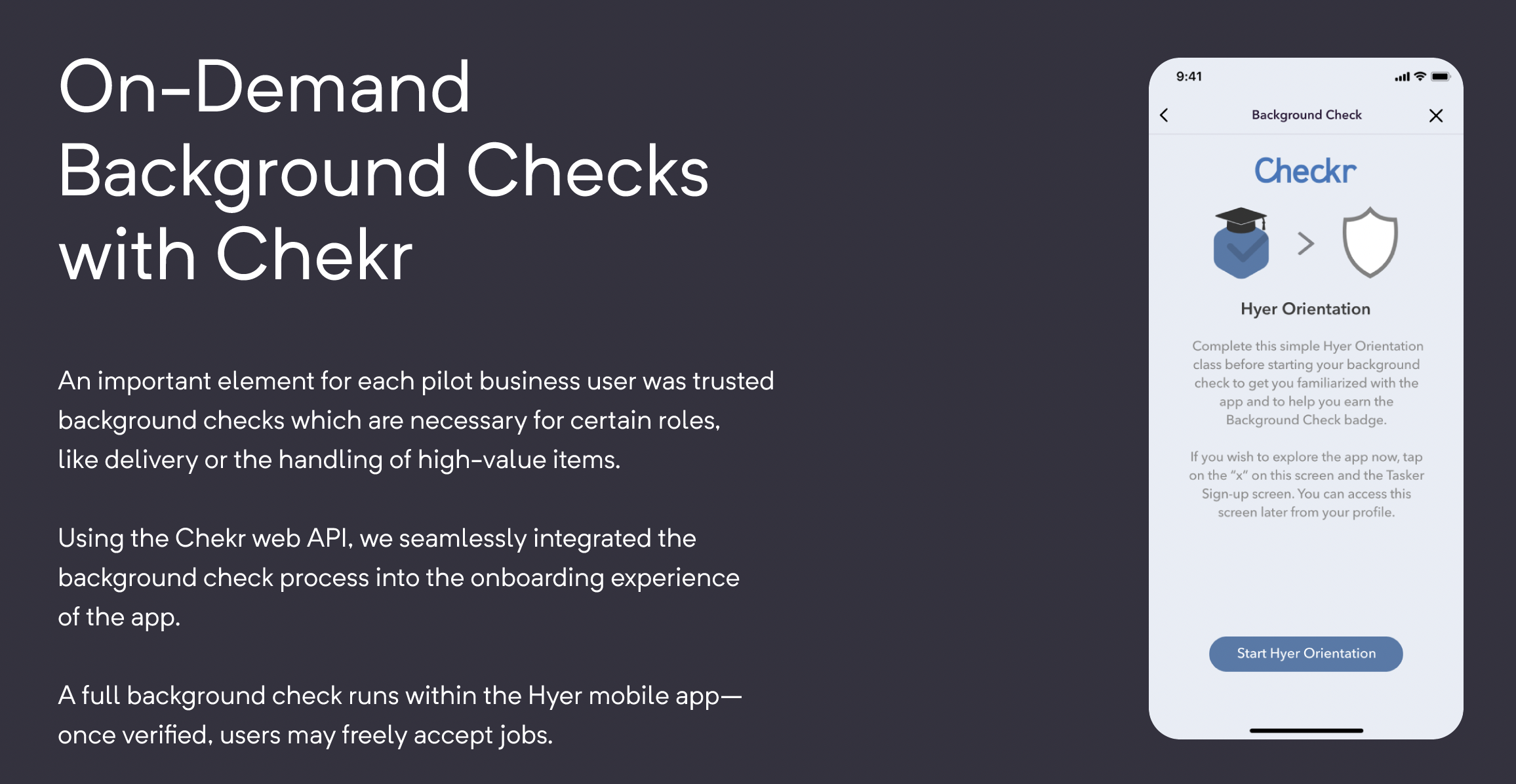
We integrated Chekr in the app we developed for Hyer. | You can read the full case study here.
These third-party technology providers have already solved these problems for you and allow you to integrate their technology into your product–for a fee.
These fees can be based on usage (e.g., background checks conducted) or storage (e.g., GBs in the cloud) or some other pricing mechanism. They are all very different and the costs vary greatly.
Planning for $500-$1,000 per month at launch is probably wise.
Sales Costs
Huzzah! You’ve launched your product to market.
So the costs end there right? Time to watch the money pour in!
… Not so fast.
Even a digital product needs to find its way into the hands of users. Some products need to be sold. Old fashioned feet on the street and cold emailing/calling. That needs to be done by someone with sales experience.
The salary for a salesperson varies greatly by geography and how much equity you might be willing to give them, but planning for $100,000 to $200,000 per salesperson per year would be wise.
Marketing Costs
Most apps need some form of marketing. Think online ads, PR, influencers, billboards, etc. The channels are nearly limitless, as is the potential spend for this portion of app development costs.
Planning for anything less than ~$10,000 per month for initial marketing costs would not be wise.
You really need to give the product a shot in the market and a chance to find product-market fit.
But the sky’s the limit here, Uber and Tinder spend hundreds of millions of dollars a year on marketing.
Partnership Costs
Sometimes, a partnership angle could garner the most users. Partnerships with other organizations, government entities, unions, etc. could be the right path to growing your user base.
This skillset is similar to a sales skillset, but with its own nuances.
Similar to the salesperson salary above, this would take $100,000 to $200,000 per partnership rep per year. Oftentimes, your salesperson from above could also handle this role, if it’s a relevant channel for user growth for your business.
Other People/Salary Costs
It’s inevitable that you’ll need to continue to grow your team to support all of the above. That will take capital.
How much?
Hard to say, but many companies who work with agencies like Blue Label Labs start to hire their own Designers and Developers 1-2 years after launch.
Benefits Costs
Employees expect benefits. Healthcare, dental and 401(k)s are table-stakes–and those alone add 10-15% overhead costs (as a % of salaries). Other employee benefits will emerge over time.
- Office Costs
- Utility Costs
- Printer Costs
- ….
- Margs with the Team at Your Local Cantina Costs
- Postage Stamp Costs
- You get the idea…
The above items add up.
Not planning or budgeting for everything from office expenses to postage stamps could bite you in the end. Investors want to know that you’re burdening your hockey stick revenue projections with a true sense of ALL app development costs. Because they are funding the expense side of the equation, not the revenue side.

It’s a couple of piggybanks’ worth of change, at least. | Source: cottonbro on Pexels
So if you’re doing the math at home, here’s where we land for Year 1 (i.e., for the first twelve months):
- Product Strategy, Branding, UX & UI Design + User Testing, Development @ $300,000 to $600,000 (over ~6-8 months)
- Maintenance (and New Feature Development) Costs @ $180,000 (assumes ~6 months)
- Server & Storage Costs @ $10,000 to $15,000
- API/SDK or Third-Party Technology Costs @ $1,000 to $10,000
- Sales Costs @ $50,000 (assumes ~6 months)
- Marketing Costs @ $60,000 (assumes ~6 months)
- Partnership Costs @ $50,000 (assumes ~6 months)
- People/Salary Costs @ Sky’s The Limit
- Benefits Costs @ 10-15% of Salaries
To recap
I hope this gives you a lay of the land on the app development costs front. I also hope this doesn’t scare you into thinking these costs are insurmountable.
Most clients come our way with either their own capital, capital from friends and family, or company profits.
But once you have that first version of your product on the market, your funding channels grow exponentially and options like the $330B+ in capital commitments from venture capital and angel investors open up.
So if you’re looking for a team of straight-shooters who will make sure you’re creating a truly user-validated product, look no further than Blue Label Labs.
We’re here to help!
Bobby Gill









